The filter rooms were not housed in a single location in a fort, but were spread across the site; the larger banks being located in and around the rear areas, with smaller banks and individual filters located in other areas. As we have mentioned in the main introduction to the Maginot Line, the concept of the Line was to avoid the carnage of the 1914-18 war from taking place on French soil. Lessons learned during that conflict influenced the designers of the Maginot; among them was the use of gas and chemical agents on the modern battlefield, thus every effort was made to protect the troops from its potential use.
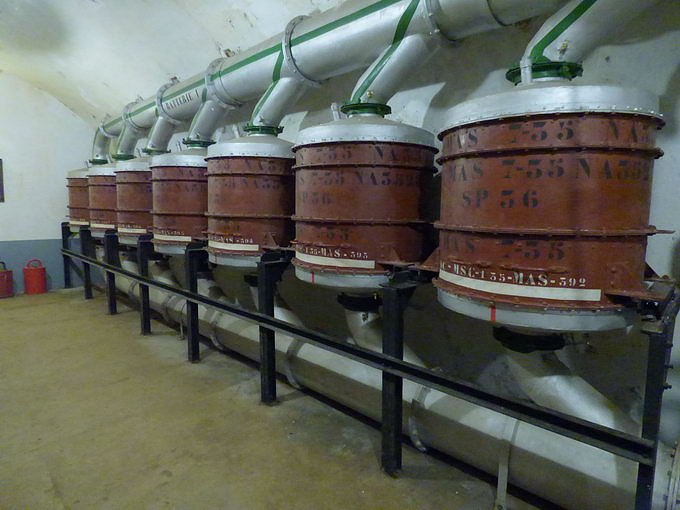
The use of gas on the battlefield in World War One was, like so much we now take to be symbols of that conflict, nothing new. Gas had already been deployed on the field of combat prior to even the mobilisation during the summer of 1914. What sealed gas into the lexicon of that conflict, was the sheer industrialised scale of its use. As a percentage of total casualties, gas only accounts for a mere 7%; however it is vitally important to understand that percentages, both large and small, are only relevant in terms of the context of the actual numbers involved. 7% is indeed a small proportion of the overall, but when viewed against the millions killed and injured by all possible means, it ceases to remain a tiny number. it is worth noting that actual deaths caused by gas, directly during the actual conflict, was equally a lower percentage of the 7%; most troops would survive although the lasting medical issues would go on to contribute to a raft of premature deaths in the inter-war years. Thus, the very statistics are themselves skewed as to the true legacy of those afflicted.

The use of gas on the battlefield in World War One was, like so much we now take to be symbols of that conflict, nothing new. Gas had already been deployed on the field of combat prior to even the mobilisation during the summer of 1914. What sealed gas into the lexicon of that conflict, was the sheer industrialised scale of its use. As a percentage of total casualties, gas only accounts for a mere 7%; however it is vitally important to understand that percentages, both large and small, are only relevant in terms of the context of the actual numbers involved. 7% is indeed a small proportion of the overall, but when viewed against the millions killed and injured by all possible means, it ceases to remain a tiny number. it is worth noting that actual deaths caused by gas, directly during the actual conflict, was equally a lower percentage of the 7%; most troops would survive although the lasting medical issues would go on to contribute to a raft of premature deaths in the inter-war years. Thus, the very statistics are themselves skewed as to the true legacy of those afflicted.
Given the relatively small numbers who were exposed to the effects of gas, it was the barbaric, indiscriminate and horrific nature of the weapon which would bring it to the forefront of international consciousness.
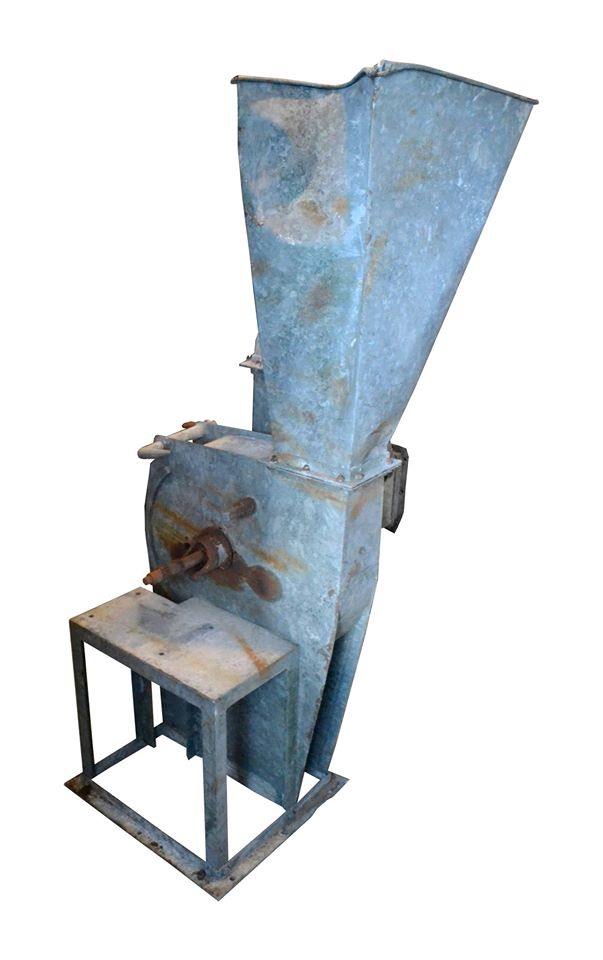
Original ducting section from the filter. Regardless of if this is to connect to an entire bank of filters, or as in presented example, a single filter, the principle remains essentially the same. The protruding cogged spindle is attached to a fan (housed inside the ducting) which was attached to either an electric motor or other means of propulsion (see below). The ducting is both the inlet and outlet for the incoming air; an internal baffle allows the air to either enter the fort directly, or by simply closing the baffle, be directed into the filter to be scrubbed clean of any potential contaminants. Our example was originally installed in a casemate in the area of the Northern Vosges; as a result of the smaller nature of the site, the air exited via the 'hopper' rather than being directed into more ducting.
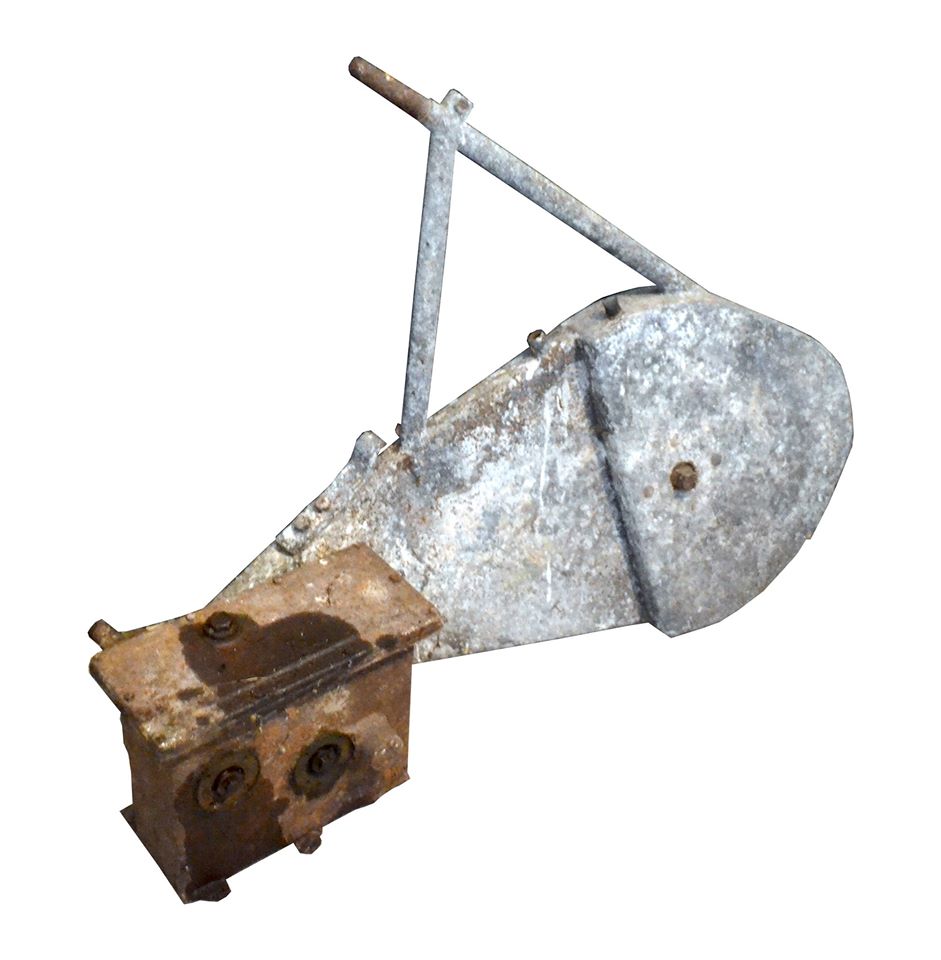 Manual cycle power unit for operating a filter. Again, this has been recovered from the area of the Northern Vosges. The casemates which ran between Lembach and Bitche were sited in remote locations. The cost of providing either a direct electrical connection or internal means of generation would have resulted in fewer casemates being constructed. In order to operate the fan (and thus create the required airflow) another means of propulsion would be required. This simple, yet extremely efficient, method was devised. The system utilised the principles of a bicycle to drive the cogged spindle (see above) via a gear box. Originally a seat would have been fitted, although by inserting a short support pole under the unit it could equally be operated by hand (the pedals were longer than those found on a standard bicycle).
Manual cycle power unit for operating a filter. Again, this has been recovered from the area of the Northern Vosges. The casemates which ran between Lembach and Bitche were sited in remote locations. The cost of providing either a direct electrical connection or internal means of generation would have resulted in fewer casemates being constructed. In order to operate the fan (and thus create the required airflow) another means of propulsion would be required. This simple, yet extremely efficient, method was devised. The system utilised the principles of a bicycle to drive the cogged spindle (see above) via a gear box. Originally a seat would have been fitted, although by inserting a short support pole under the unit it could equally be operated by hand (the pedals were longer than those found on a standard bicycle).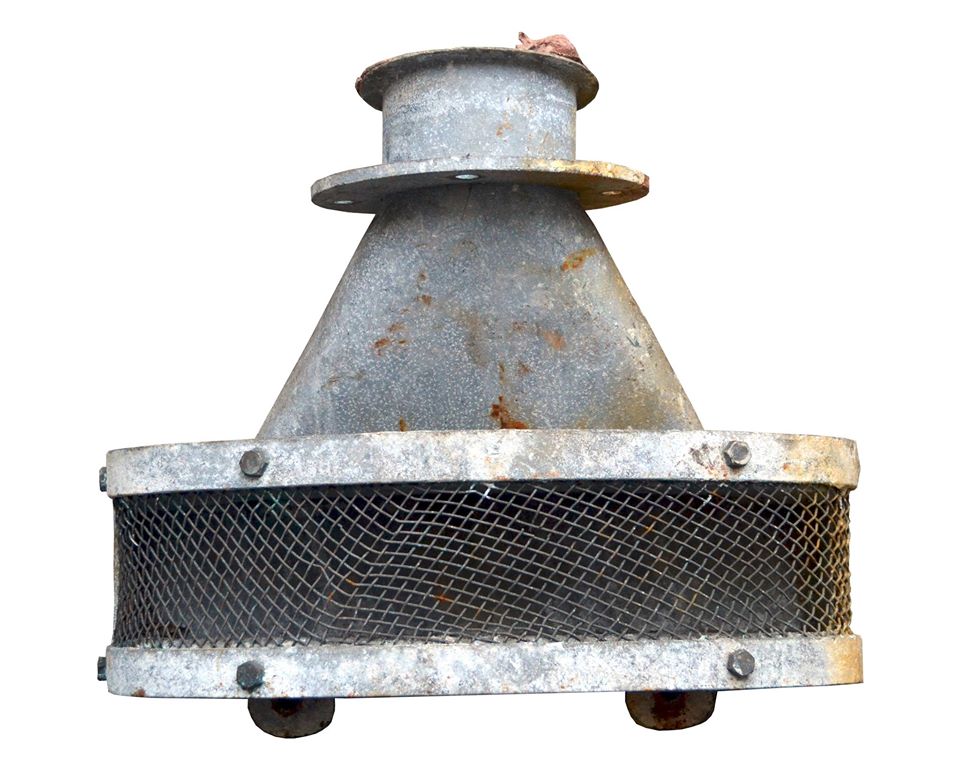
Open vent. When the air was ducted around a fort, there were two options for delivery to its destination. In this instance, the air supply is a constant flow; there is no means to isolate the supply via the ducting. Equally, this type could be attached in an area where extraction of the air was required, such as the kitchens.
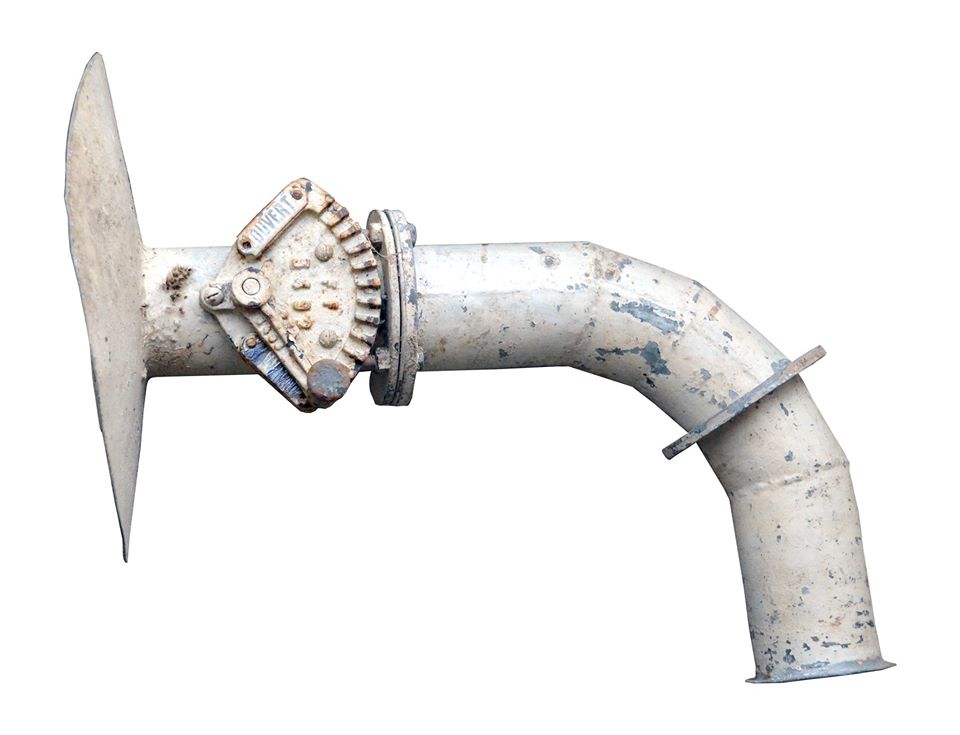 Closable vent. As with the vent described above, this was placed at the end of a section of ducting. However, in this instance, the supply needed to be regulated. It offered the option to simply reduce the amount of air being delivered or close it off completely. This was achieved by using the simple valve located on the side. An enamel label indicates the state of the valve, this itself being rare as such items were often the first to be looted by illegal souvenir hunters.
Closable vent. As with the vent described above, this was placed at the end of a section of ducting. However, in this instance, the supply needed to be regulated. It offered the option to simply reduce the amount of air being delivered or close it off completely. This was achieved by using the simple valve located on the side. An enamel label indicates the state of the valve, this itself being rare as such items were often the first to be looted by illegal souvenir hunters.